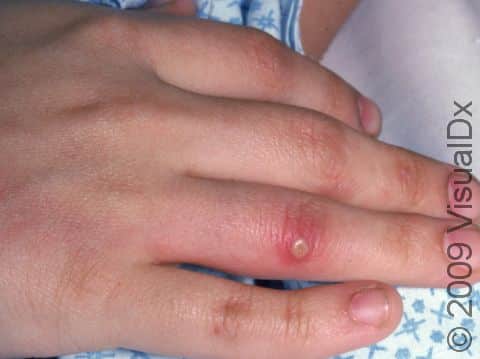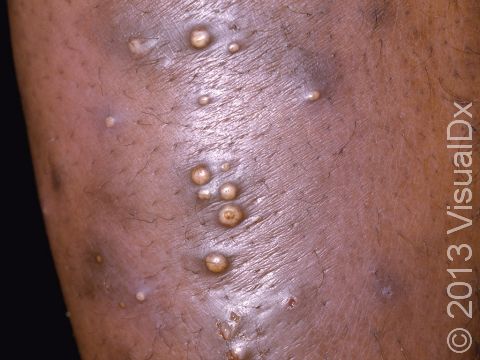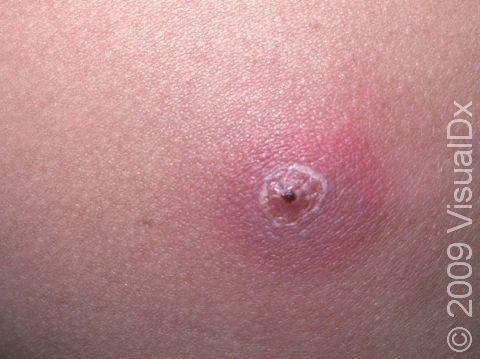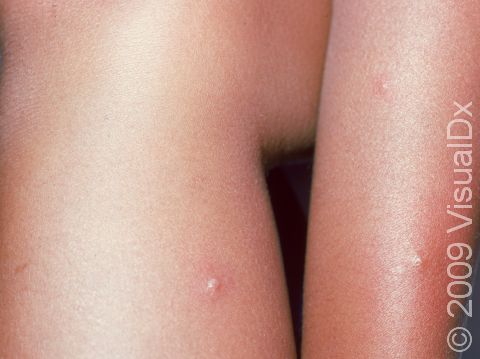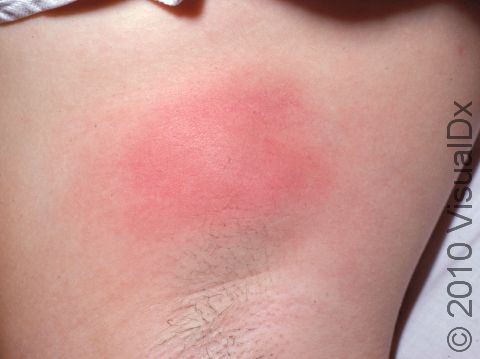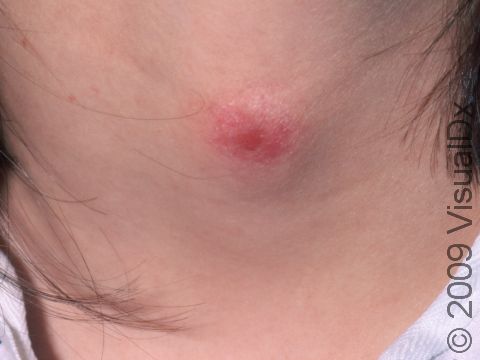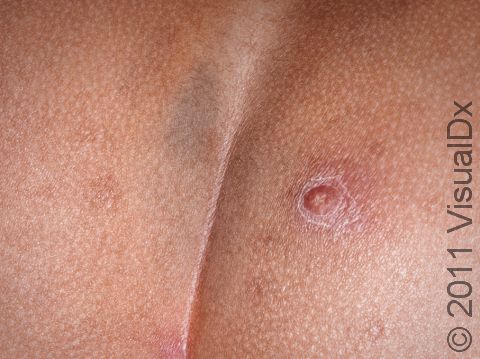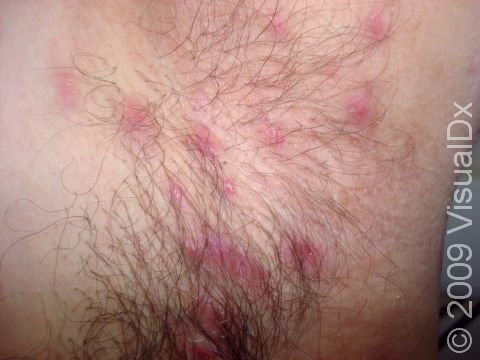Boils (Furunculosis)
Furunculosis is a skin condition that occurs with the development of multiple boils involving an entire hair follicle and nearby skin tissue. The medical name for a boil is “furuncle,” which is where the name of the condition comes from. Boils are very common and are caused by bacteria or fungi that are normally found on the skin of healthy people. However, when there is damage to the hair follicle, the bacteria or fungi that reside on the skin’s surface are able to penetrate the skin and enter deeper into the follicle, underneath the skin. They usually begin as a tender, red bump that becomes pus-filled. If not treated or lanced (incised), the boils can get bigger and more painful. If the infection starts to spread, the affected person may start to develop fevers and/or chills.
Who's At Risk?
Anyone can develop boils or furunculosis, although people who have cancer or are on immune-suppressing drugs (eg, chemotherapy drugs) are more prone to the infection than others. Diabetics, those who are obese, and people who have poor nutrition are also at risk. Chronic friction and/or medication to the skin can cause trauma, causing small cuts that allow the bacteria to enter the skin and spread.
Signs & Symptoms
A red-to-purple, tender lump on an area of the skin that also has hair. The most common areas for boils to occur are places where there is friction and/or places that tend to be sweaty, such as the buttocks, armpits, groin, neck, shoulders, and face. The skin surrounding the lump may look swollen and red. The center of the lump eventually becomes filled with yellow or white pus that you will be able to see (called “coming to a head”). The pus is a mixture of bacteria and infection-fighting white blood cells.
Self-Care Guidelines
Warm compresses applied to the area for 20 minutes at least 3–4 times a day may ease the discomfort and help encourage the boil to drain. If the boil starts to drain, wash the area with antibacterial soap and apply some triple antibiotic ointment and a loose bandage. Repeat this process of cleansing and bandaging the area 2–3 times a day until the skin is healed.
Boils can be very contagious. Do not share clothing, towels, bedding, or sporting equipment with others while you have a boil. Wash your hands frequently with antibacterial hand soap to avoid spreading the infection to others.
Use an antibacterial soap on boil-prone areas when showering, and dry your skin thoroughly after bathing. Avoid tight-fitting clothing and activities that cause a great deal of sweating.
Do not pop the boil yourself with a pin or needle. Doing so may make the infection worse.
Treatments
The pus inside of a boil needs to be drained thoroughly before the body can completely clear the infection. If the boil does not drain itself, your doctor may wish to perform a simple procedure. In this procedure, a sterile needle or small blade is used to “nick” the skin over the top of the boil, and the pus is allowed to drain out. The area will then be cleaned and bandaged, and you will be sent home with instructions to wash, apply antibacterial ointment, and re-bandage the area several times daily as discussed above. You may also be prescribed a course of antibiotics to be taken by mouth.
Your physician may choose to collect a swab of the pus for laboratory analysis and swabs from other areas of the body (nose, armpits, and/or anus and genital area) to determine if you are a carrier of staph. If you are a carrier, your doctor may prescribe a topical medication applied to the inside of the nose and/or oral antibiotics for several days. These measures can help to prevent a recurrence of the boil(s) and to decrease the possibility that you may unknowingly spread the germ to others. If your doctor prescribes antibiotics, be sure to take the full course of treatment.
Visit Urgency
See your doctor if:
- You have multiple boils or if the boil(s) increases in size or number.
- You have a fever or chills, severe pain, or otherwise feel unwell.
- The boil fails to drain.
- The area of redness surrounding the boil begins spreading.
- You have diabetes, a heart murmur, a problem with your immune system, or are taking immune-suppressing medications when you develop a boil.
- You have had repeated outbreaks of boils.
If you are currently being treated for a skin infection that has not improved after 2–3 days of antibiotics, return to your doctor.
Community-associated methicillin-resistant Staphylococcus aureus (CA-MRSA) is a strain of “staph” bacteria resistant to antibiotics in the penicillin family, which have been the cornerstone of antibiotic therapy for staph and skin infections for decades. CA-MRSA previously infected only small segments of the population, such as health care workers and persons using injection drugs. However, CA-MRSA is now a common cause of skin infections in the general population. While CA-MRSA bacteria are resistant to penicillin and penicillin-related antibiotics, most staph infections with CA-MRSA can be easily treated by health care practitioners using local skin care and commonly available non-penicillin-family antibiotics. Rarely, CA-MRSA can cause serious skin and soft tissue (deeper) infections. Staph infections typically start as small red bumps or pus-filled bumps, which can rapidly turn into deep, painful sores. If you see a red bump or pus-filled bump on the skin that is worsening or showing any signs of infection (ie, the area becomes increasingly painful, red, or swollen), see your doctor right away. Many people believe incorrectly that these bumps are the result of a spider bite when they arrive at the doctor’s office. Your doctor may need to test (culture) infected skin for MRSA before starting antibiotics. If you have a skin problem that resembles a CA-MRSA infection or a culture that is positive for MRSA, your doctor may need to provide local skin care and prescribe oral antibiotics. To prevent spread of infection to others, infected wounds, hands, and other exposed body areas should be kept clean and wounds should be covered during therapy.
References
Bolognia, Jean L., ed. Dermatology, p. 1126. New York: Mosby, 2003.
Wolff, Klaus, ed. Fitzpatrick’s Dermatology in General Medicine. 7th ed, pp. 1700-1701. New York: McGraw-Hill, 2008.
Last modified on August 16th, 2022 at 2:45 pm

Not sure what to look for?
Try our new Rash and Skin Condition Finder
